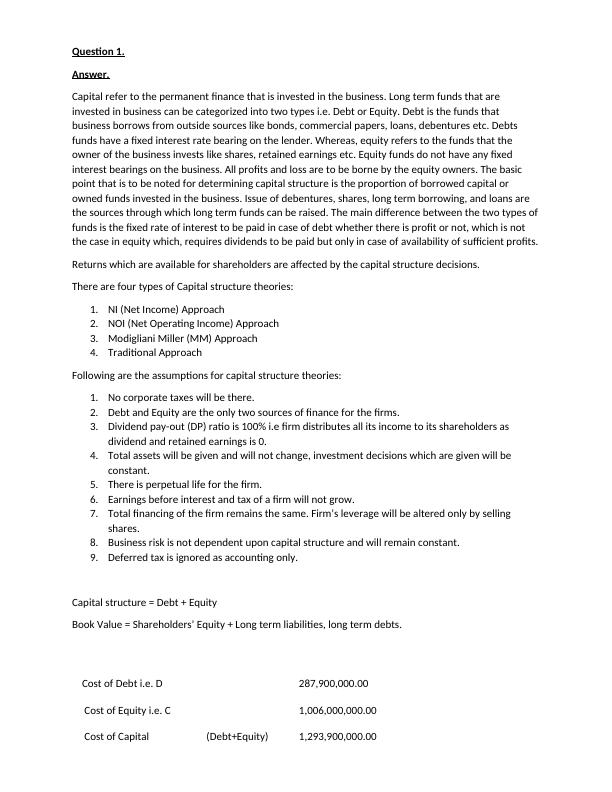Capital Structure Theories and Calculation of Cost of Capital for Desklib
List assumptions, calculate book value and market value capital structure, calculate cost of long term debt, cost of equity, and cost of capital, and discuss which cost equities should be used and why.
14 Pages3192 Words289 Views
Added on 2023-05-30
About This Document
This text explains the concept of capital structure and its theories, including the difference between debt and equity, book value and market value, and the implications of using them. It also covers the calculation of cost of capital, hurdle rate, beta, and financing options. The text is relevant for students studying international finance and decision making.
Capital Structure Theories and Calculation of Cost of Capital for Desklib
List assumptions, calculate book value and market value capital structure, calculate cost of long term debt, cost of equity, and cost of capital, and discuss which cost equities should be used and why.
Added on 2023-05-30
ShareRelated Documents
End of preview
Want to access all the pages? Upload your documents or become a member.
Assignment on Cost of Capital
|5
|1130
|62
FINA 6000 Managing Finance
|7
|891
|39
Cost of Equity and Other Valuation Methods for Desklib
|9
|2886
|201
Calculating Weighted Average Cost of Capital and Gearing Ratios for AGL Energy Ltd
|8
|1866
|59
Valuation of shares of JB Hi Fi Ltd
|11
|1896
|188
Determining Capital Structure and Weighted Average Cost of Capital (WACC)
|5
|1146
|111




